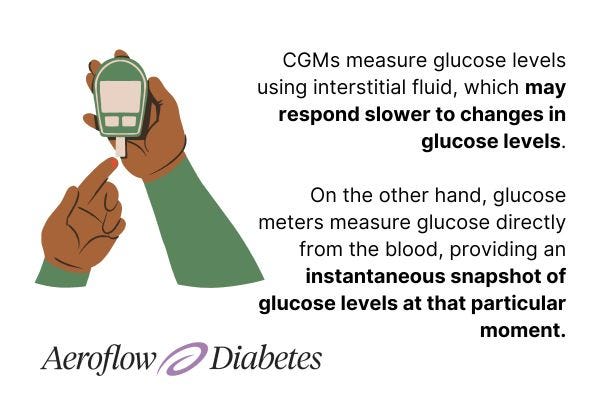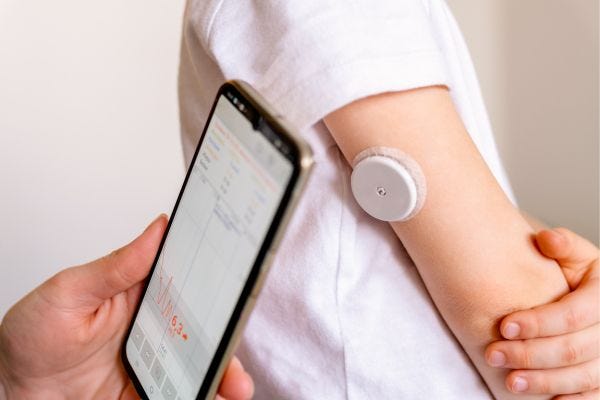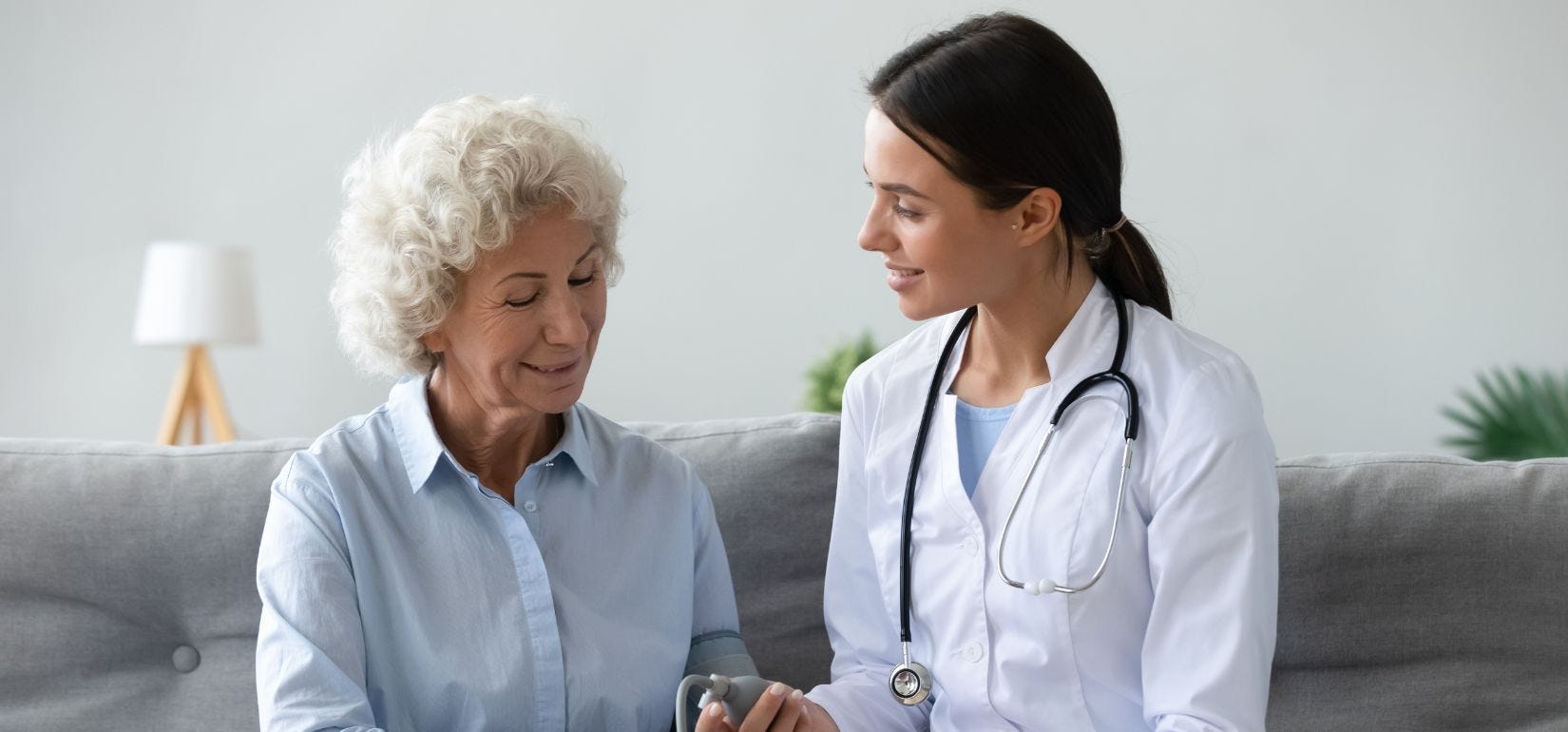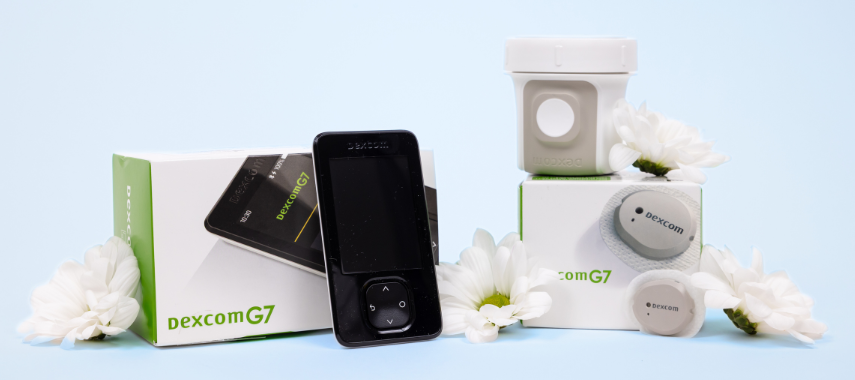Key Takeaways:
- Glucometers and CGMs may give different blood glucose readings due to the medium with which each device measures glucose levels.
- While the readings may be different, they are likely to be accurate in their own way.
One of the most common questions that arises when people with diabetes use continuous glucose monitors (CGMs) is why the readings from their sensor can sometimes be vastly different from the readings given by their glucometer.
This is obviously very worrying, especially for those who rely on their glucose readings to administer appropriate doses of sliding-scale insulin.
Discover why your glucometer readings might differ from your CGM readings in this article.
Jump To:
What Is a Glucometer & How Does It Measure My Glucose Levels?
What Is a CGM & How Does It Measure My Glucose Levels?
Why Are My Glucometer & CGM Glucose Level Readings Different?
Will My Glucometer & CGM Glucose Level Readings Ever Be the Same?
Should I Use My Glucometer or My CGM to Measure Glucose Levels?


What Is a Glucometer & How Does It Measure My Glucose Levels?
A blood glucose meter, also called a glucometer or glucose meter, is a device used to measure the level of glucose in the blood.
Your glucometer uses a small sample of capillary blood, usually extracted from your fingertip. The drop of blood is placed on a test strip to read your glucose levels.
What Is a CGM & How Does It Measure My Glucose Levels?
A CGM is a device used for measuring your glucose levels throughout the day and night using interstitial fluid. A CGM consists of 3 parts: A sensor, a transmitter, and a reader.
Your CGM sensor is inserted under your skin, where it measures glucose via your interstitial fluid. The transmitter on the outside of your skin then receives your glucose readings from the sensor and sends them to the reader in real-time. The reader, which is either a reader that comes with your CGM system or your phone, then receives the real-time data from the transmitter, in some cases as often as every minute, and displays your glucose readings.


Why Are My Glucometer & CGM Glucose Level Readings Different?
It is common for your glucometer test results to differ from your CGM readings. The main reason for this is that the medium used to measure your glucose levels differs between a glucometer and a CGM.
Blood is quick to react to changes in glucose, so a reading from a glucometer gives a snapshot of your blood sugar at that moment.
On the other hand, a CGM does not use blood to measure glucose. When your CGM sensor is applied, it uses a needle to insert a small, hollow fiber strand (rather like a cannula) under your skin, and then the needle retracts.
The cannula is left sitting in your interstitial fluid (fluid that fills the spaces between the body’s cells), which is made up of water, hormones, proteins, sugar, and other products derived from your cells. The CGM sensor uses this fluid to measure glucose, and it can be somewhat slower than blood to react to changes in your blood sugar levels (anywhere between 5 and 15 minutes slower).
Because of the difference in how quickly a glucose reading is presented, if your glucose is rising or falling very rapidly (for example, after eating, during exercise, or after administering insulin), this delay can cause your readings to be quite different between the glucometer and the CGM.
This often leads to the belief that one of the devices is inaccurate, but this isn’t true. It’s simply the rapid pace at which your glucose changes and the different ways the two devices measure glucose.
Will My Glucometer & CGM Glucose Level Readings Ever Be the Same?
If your glucose is stable and not moving quickly, the readings between your CGM and glucometer will be much closer, although they will rarely be exactly the same.
Should I Use My Glucometer or My CGM to Measure Glucose Levels?
In actuality, both devices are likely to give accurate readings in their own way.
However, your glucometer can be faster and only provides a single snapshot of your blood sugar reading at that moment.
Your CGM provides your current interstitial glucose reading which, although a little slower to react, provides additional data about readings for the past several hours (and, in some cases, days), as well as what direction the glucose is currently traveling and how quickly it is moving.


You may also find that within the first 24 hours or so of wearing your sensor, the readings can return some unusual or unexpected data. This can be caused by the "injury" that occurs to your subcutaneous tissue during insertion, which is when the needle injects the sensor under your skin and then retracts.
This action can create trauma that affects your interstitial fluid, leading to unusual readings during that first day or so after insertion. Always use a fingerstick if you are unsure of your sensor reading, before administering insulin.
It’s important to remember that the FDA would not have approved Dexcom and Freestyle Libre System CGMs if they were unreliable or gave inaccurate readings. CGMs are still excellent devices to include in diabetes care.
There are a whole host of other factors that can affect blood glucose monitoring, including:
- Dehydration
- Body chemistry and metabolism.
- Blood sample size and whether you squeeze a finger to get the blood sample out.
- Medications
- Vitamin supplements.
- Food and drink ingested.
- Insulin administered.
- Exercise
- Illnesses and infections.
- Application sites.
- Temperature (ambient and body).
- Altitude
- Device storage sites.
- Calibrations
- How long your CGM sensor has been worn.
- Hemodialysis and peritoneal dialysis.
It’s essential to understand how glucometers and CGMs differ, how to read the data each presents, and how to use this information to make informed decisions about treating diabetes.
Most endocrinology practices have CGM trainers and diabetes educators on staff who can be used as resources for your diabetes management. If not, there are diabetes educators in most hospitals around the country who just require a referral from your healthcare provider.
If you would like to talk to an Aeroflow Diabetes CGM Specialist to learn more about how to get the best out of your CGM products, you can schedule a telephone or video appointment with us!
Can I Get a Low-Cost CGM With Medicare & Aeroflow Diabetes?
You may qualify to get a low-cost CGM through your Medicare plan so you can more easily manage your type 1 diabetes or type 2 diabetes.
Our Aeroflow Diabetes experts can tell you quickly if you qualify- all you need to do is fill out our short Eligibility Form!
It takes under 2 minutes to complete. We keep your information private and determine your coverage based on your insurance company’s requirements, taking the confusion out of insurance paperwork. Plus, your out-of-pocket costs may decrease, saving you money on each CGM device.
If you qualify, we’ll contact your healthcare professional for a CGM device prescription. We will then guide you through which CGMs you can receive through your insurance coverage and mail your order to your doorstep!
Jump To: Top | Eligibility Form
Disclaimer
Information provided on the Aeroflow Diabetes website is not intended as a substitute for medical advice or care from a healthcare professional. Aeroflow recommends consulting your healthcare provider if you are experiencing medical issues relating to diabetes care.








